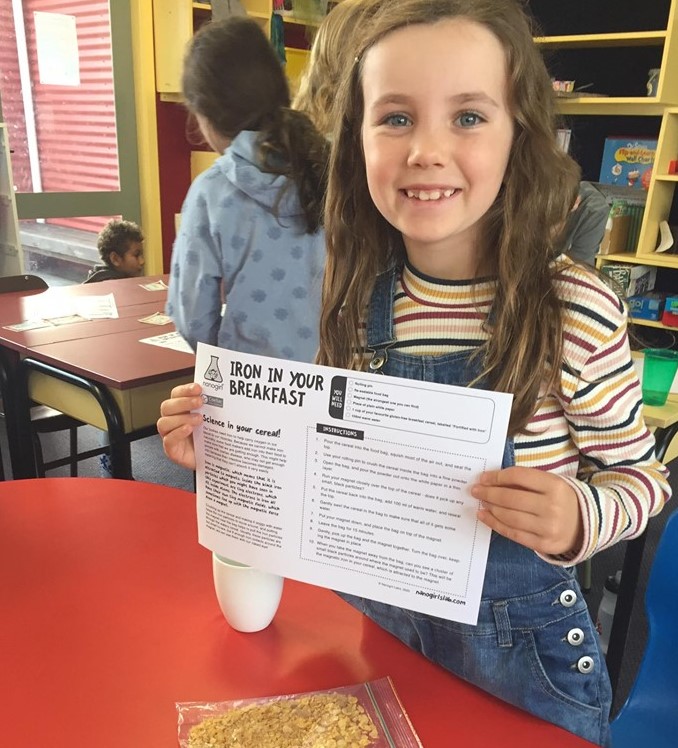

Jocelyn Hendry shares with Coeliac NZ photos of her 8 year old daughter Evie Hendry and her class completing the experiments prepared by Nano Girl Labs to help raise awareness and understanding about coeliac disease. She said "Evie attends Riwaka School in the Tasman district of NZ (top of the South), and her teacher was only too happy to take on the challenge and Evie’s entire class this morning took place in the Science experiment."
Coeliac disease is a condition in which the inner lining of the small intestine is damaged, which leads to a defect in the absorption of nutrients. The normal structure of the inner surface of the small intestine lining is composed of undulating wavy projections that are called villi. These help increasing the surface area of the intestine for the effective absorption of nutrients. When a person with coeliac disease eats food containing gluten - found in wheat, rye, barley and oats the immune system overreacts and responds by attacking the cells in the lining of the small intestine leading to a destruction of the villi. As a result nutrients are unable to be absorbed and malnutrition can occur, regardless of the quality of quantity of food eaten.
The two experiments that have been developed in collaboration with NanoGirl’s Lab demonstrate
For more information and to download the experiments read the article here.
A tip from Dr Kate Sparks to set up the GF cereal experiment..."I recommend that anyone trying this experiment use the strongest magnet they can find to help get the best result. For those doing this at home, we know that is likely to be a fridge magnet. This experiment has been tested with fridge magnets as well as stronger ones. The size of magnets might make a difference here - those large, flat, bendy magnetic fridge stickers don't seem to work as well as the smaller, thicker, rounder magnets. You might like to double up the magnets if just one isn't strong enough - otherwise, if no magnet seems to be working at all, your might be able to get a better result with slightly more water in the bag to make sure that the cereal is soaked and really soggy, as this will help any magnetic particles to be able to move freely through the cereal mush. The experiment has been tested with both the Healtheries Gluten Free Berry De-Lite cereal and Hubbards Gluten-Free Corn Flakes. I hope this helps your readers and that they enjoy experimenting!"